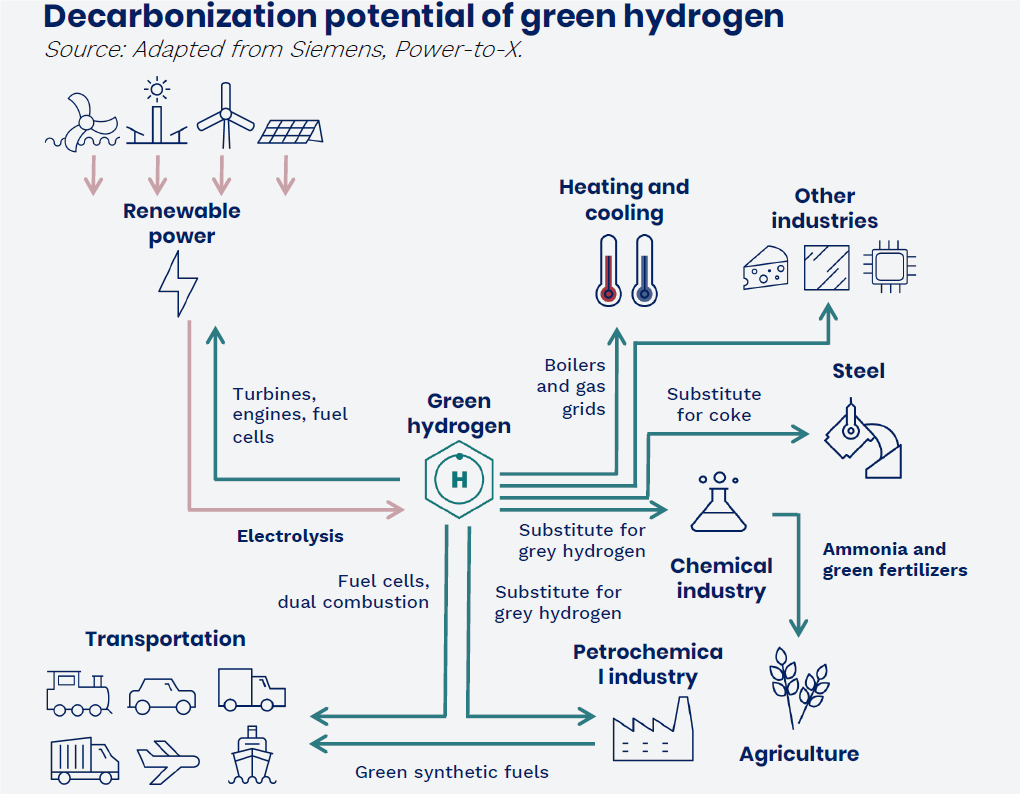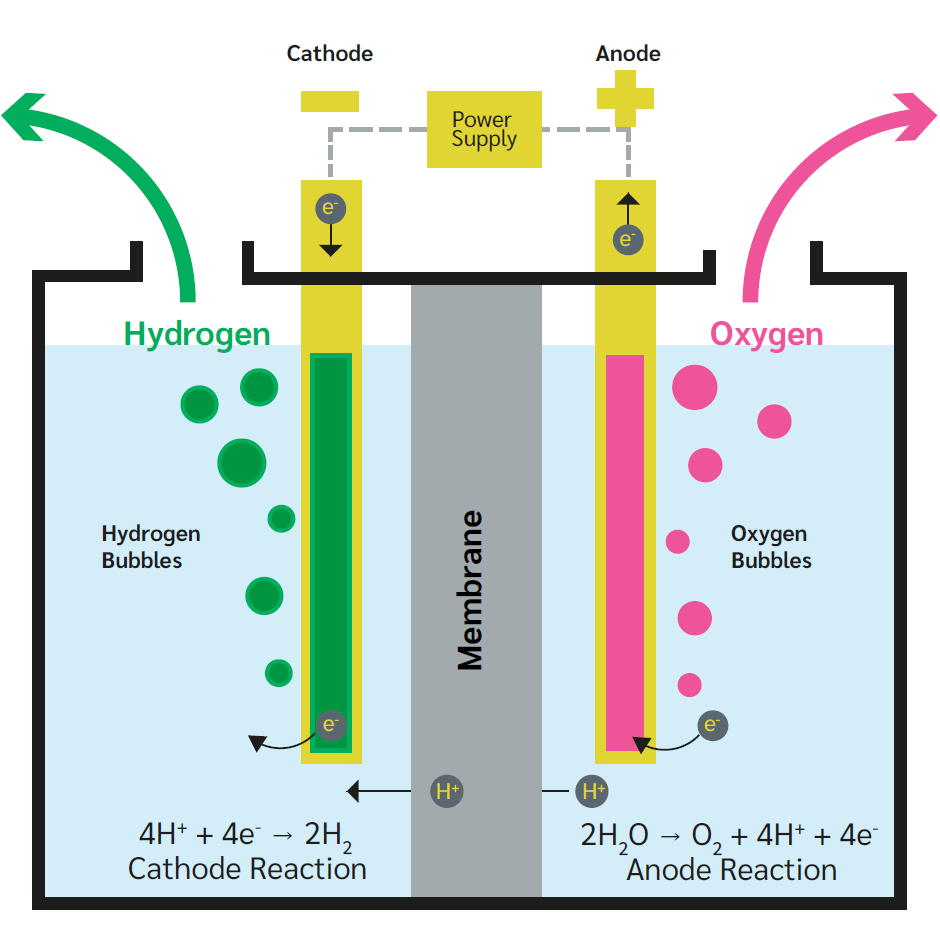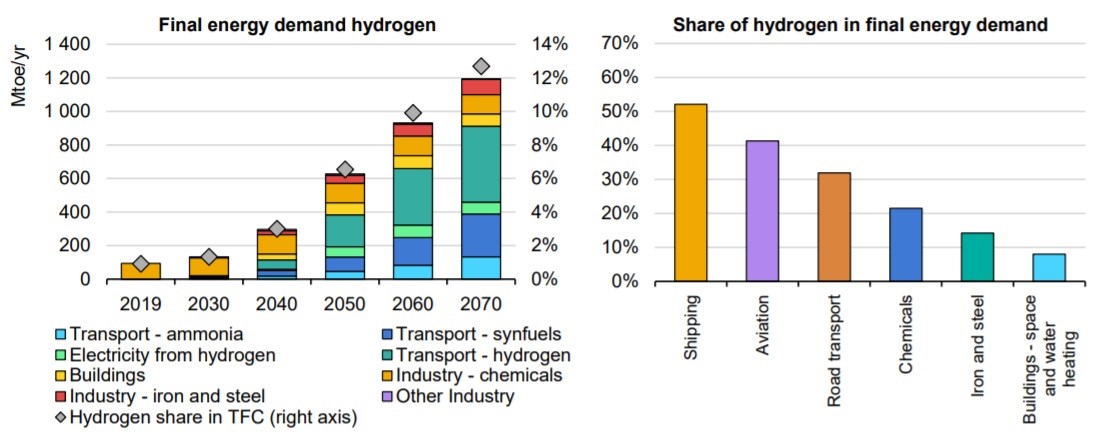Countries putting in place ambitious greenhouse gas emissions reduction targets are increasingly finding that hydrogen will play a major part in their plans. While over 30 countries have already produced hydrogen roadmaps in the world, Chile is among those best positioned to produce this energy sustainably at large scale. However, as with all large and innovative projects, potential risks need to be closely monitored and addressed, not least to get the necessary support from insurers.
Chile’s Atacama Desert in the country’s north offers the perfect environment for solar energy production as it records the highest solar irradiance (opens a new window) on Earth. At the same time, Patagonia in the country’s south experiences strong and consistent winds, making the region perfect for wind energy production. Overall, Chile has the renewable energy potential to install 70 times the electricity generation capacity it currently has, according to the country’s government (opens a new window).
As large amounts of the green energy production cannot be consumed immediately it will need to be stored and distributed where it’s required. Using batteries on large scale would be too expensive. Using the energy to generate hydrogen, which can be transported and stored creates the necessary flexibility. Hydrogen can serve as an energy carrier that emits no greenhouse gases when consumed.
Taking advantage of its vast potential for solar and wind energy production, Chile has the ambition to become the cheapest producer of green hydrogen in the world. This will allow the country not only to replace fossil fuels as power source in the mining, transport and agricultural sectors, but also to become a global exporter of this energy source as well as of green label products, according to its government.
Hydrogen can power different forms of transport either within fuel cells, or by burning in a combustion engine. Hydrogen can also be used in the same way as natural gas in power plants to generate electricity.

Source: National Green Hydrogen Strategy, Government Chile
Hydrogen production
Electrolysis of water is emerging as a workable process to produce
hydrogen using electric current generated from renewable sources. The
energy enables the separation of water into its constituents, hydrogen
and oxygen.

Source: Hydrogen Energy Overview by Richard Clark, Lockton
Among the challenges to produce green hydrogen is that the process requires water. Distilled water is unsuitable as it lacks dissolved electrolytes. While seawater would be the preferred option due to its abundancy, the disadvantages of this option include corrosion loss and the need for expensive noble metals as catalysts. An alkaline solution (pH greater than 7) is therefore currently the most economically viable option to perform the electrolysis.
Another challenge is to store and transport hydrogen efficiently and safely. In form of gas, hydrogen is not very dense and therefore requires more space than for example in liquid form. In addition, leaks can lead to vapour cloud explosions. The primary way for storing hydrogen for use in cars, buses and other forms of transport is within pressured fuel tanks. An efficient way of distribution is to use infrastructure already in place such as for natural gas. Alternatively, hydrogen can be transported by ship/barge. Naturally occurring underground caverns that have been drilled into for the natural gas or oil they contain, or man-made caverns, created via a leaching process in rock salt can serve as storage.
Global final energy demand for hydrogen in a sustainable development scenario

Source: IEA Energy Technology Perspectives 2020
Potential risk drivers
While the producing and handling of hydrogen has been extensively tested in the past in many areas, the type and scale of projects that the hydrogen initiatives entail are unprecedented.
Supply and value chains for the hydrogen strategies are complex and will require precise coordination, particularly as new companies enter the market as planners, manufacturers and operators. There is a definite learning curve for all companies involved including insurers, which are crucial for the viability of such commercial ventures. All projects therefore require careful risk assessment and regular information exchange with insurers.
Areas of concern
Allianz Global Corporate & Specialty (AGCS) has recently identified a number of key areas of concern in a recent risk bulletin (opens a new window):
Green hydrogen requires large electrolysers to power electrolysis plants that are not yet widely available.
Hydrogen is difficult to store given the large volume required.
Hydrogen is difficult to transport and is prone to making steel pipes and welds brittle.
The gas is highly flammable and can escape through miniscule leaks if not stored properly, potentially causing an explosion if it mixes with air. Leaks are hard to identify without dedicated detectors since hydrogen is colourless and odourless. A hydrogen flame is almost invisible in daylight.
Hydrogen can potentially damage the stratosphere if released into the environment, contributing to the build-up of greenhouse gases.
Damage to the electrolysis cell can result in significant losses and claims due to extensive interruption of production.
Membranes (polymer electrolyte membrane electrolysis) are sensitive to impurities, which can challenge reliable long-time operation.
Lead time for new membranes could be long (several months), resulting in production delays.
Short circuits due to corrosion on the electrodes could cause an oxygen-hydrogen-gas explosion.
Local overload can damage diaphragms.
Cathodes/electrodes also represent a possible source of damage (again leading to potential long production delays).
Diffusion of hydrogen can cause metal and steel to become brittle which can affect a wide range of components, for example, piping, containers or machinery components. In conjunction with embrittlement, hydrogen-assisted cracking (HAC) can occur.
Converting existing natural gas pipelines to hydrogen requires detailed investigation.
The main risk in liquefaction plants is the handling of the explosive hydrogen, which requires sufficient protective measures. Further, a high risk of business interruption costs may ensue in case of failure of individual components.
Larger equipment, such as heat exchangers, are unique and therefore critical with respect to business interruption.
The risk of pipeline transport of hydrogen and the associated infrastructure, such as compressor stations, needs to be assessed individually, addressing not only the use of suitable materials to avoid embrittlement, but also the increased flammable range of hydrogen/air mixtures compared to natural gas.
Careful occupational health and safety measures are necessary not least because of the flammability of hydrogen/air mixtures.
An AGCS analysis of more than 470,000 claims across all industry sectors over five years shows that fire and explosions caused considerable damage and destroyed values of more than €14bn ($16.75bn) over the period under review.
Excluding natural disasters, more than half (11) of the 20 largest insurance losses analysed were due to this cause, making it the number one cause of loss for businesses worldwide. Business interruption (BI) costs following a fire can significantly add to the final loss total. For example, AGCS analysis shows that across all industry sectors, the average BI loss from a fire incident is around 45% higher than the average direct property loss – and in many cases the BI share of the overall claim is much higher, especially in volatile segments such as oil and gas.
Recommendations:
Secondary explosion protection can ensure safe design of electrical and other installations in rooms where the formation of a mixture cannot be completely excluded.
Ignition sources should be avoided where possible for example by using alternatives to electrical components. Proper earthing of all relevant parts and conductive floors should also be considered.
Tertiary explosion protection adds another safety layer. It includes designing and constructing buildings and facilities to withstand an explosion with limited damage.
Carefully maintaining the facilities and machines according to the manufacturer’s recommendations is crucial. This should include a combination of predictive maintenance measures and periodic maintenance procedures.
Risk management processes:
Identify hazards and define risk mitigation measures.
Ensure the integrity of the system.
Ensure proper ventilation to prevent accumulation (manage discharges).
Ensure that leaks are detected and isolated.
Ensure adequate training of staff
The insurance view
Insurers will need to develop a more detailed underwriting approach to this segment and apply the same rigor in risk selection and underwriting as they do on existing energy construction and operational business. (opens a new window)
AGCS data shows (opens a new window) that many hydrogen fires result from the self-ignition of sudden hydrogen release through rupture of disks and pressure relief valves. About 25% of the losses were attributed to leaks. Of these leaks, 40% were undetected before the loss. Contributing factors were inadequate ventilation and inadequate purging.
The data also shows the advantage of locating hydrogen equipment outdoors. Hydrogen has been accidentally released outdoors many times without ignition. Almost all indoor releases have ignited. Indoor releases resulted in more than three times as many explosions than fires, whereas outdoor releases have resulted in an approximately equal number of fires and explosions.
While fire and explosion are key perils, as with any energy risk, business interruption and liability exposures are also important. Transit and installation issues and mechanical failure exposures are also present.
Insurance solutions for the hydrogen power supply is likely to involve tailoring existing product capabilities for this new segment. This may result in cross-class solutions – for example, joining marine, liability and energy and construction coverages for smaller hydrogen facilities, if there is demand for a cross-product offering.
For further information, place contact:
Peter Foley, Managing Director Lockton Chile
E: peter.foley@cl.lockton.com

